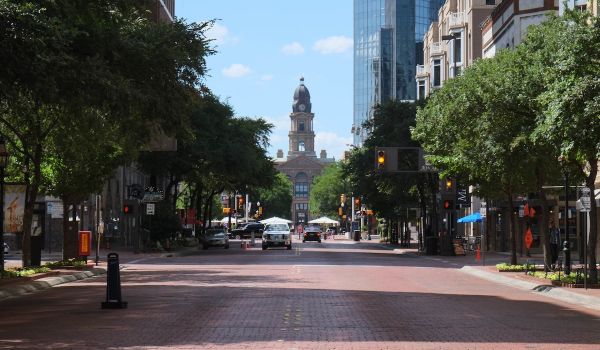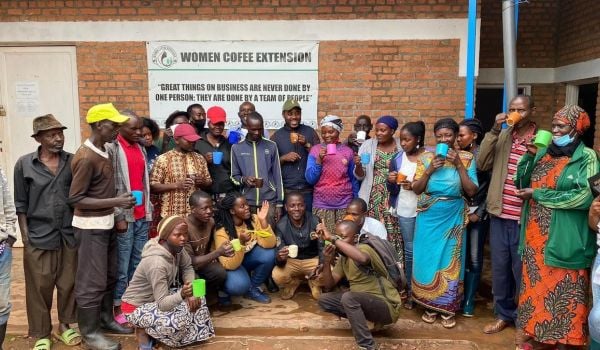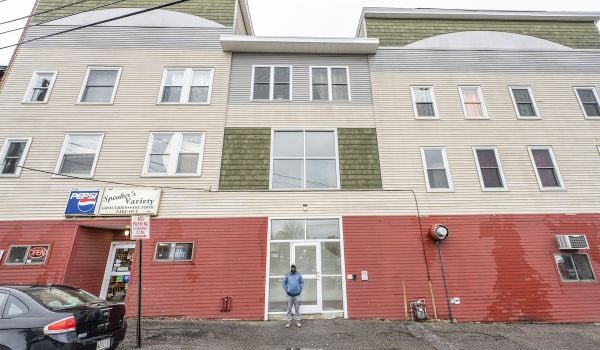When the second round of the Small Business Administration’s Paycheck Protection Program opened, at 10 a.m. Eastern Time on April 27, the Chicago-based nonprofit IFF had 50 of the forgivable loan applications approved and ready to file with SBA. All of them were for loans to other nonprofits around the Midwest, mostly in Illinois, Michigan and Ohio, with some in Wisconsin, Indiana, Missouri, and parts of Kentucky.
Overall, since the second round of the Paycheck Protection Program opened, IFF has made 135 forgivable loans under the program so far, for nonprofits seeking as little as $900. It’s helping create a stark contrast with the Paycheck Protection Program’s first round, from April 3 to April 16, in which many nonprofits had an even harder time accessing the program than small businesses who themselves had trouble accessing the program.
Established in 1988, IFF exists specifically to make loans to nonprofits. Since inception, the nonprofit has made nearly a billion dollars in loans to more than 900 nonprofits in ten midwestern states, supporting everything from affordable housing to child care centers to charter schools to health clinics and more. But even with all its experience lending to nonprofits, in order to process SBA loans for the Paycheck Protection program, IFF needed to partner with another nonprofit — Community Reinvestment Fund.
IFF is one of almost two dozen groups that have turned to Community Reinvestment Fund over the past few months in order to quickly stand up a lending operation to expand access to the Paycheck Protection Program. The others include credit unions and other lenders serving native communities and other vulnerable communities, as well as local government authorities all around the country.
Although it does make some of its own loans today, the Twin Cities-based Community Reinvestment Fund, USA, was established in 1988 to help other groups set up and scale up their community development lending operations from behind the scenes. It’s evolved over the years, but the Paycheck Protection Program has CEO Frank Altman feeling a little nostalgic.
“We went back to our roots as an organization that supports the lending activity and needs of other governmental and nonprofit lenders,” Altman says.
Altman co-founded the organization in 1988. By that point he’d spent more than a decade working in a series of public sector jobs with a finance bent.
Working as a senior policy advisor in the Minnesota governor’s office, Altman saw small cities and towns and rural communities creatively using Community Development Block Grant dollars from the federal government to provide low-interest loans for energy efficiency and other small residential projects.
But federal dollars for community development were already in short supply, and falling every year. From inception in 1982 to 2017, total Community Development Block Grant funding fell by 64 percent, according to the Center on Budget and Policy Priorities. Meanwhile, partisan politics and budget deficit concerns limited what the state could do to bolster existing work at the local level.
Feeling constrained on all sides, Altman and his colleagues came up with an idea to make more effective use of the money that was already out there. Altman went on to create a nonprofit, known as Community Reinvestment Fund. The nonprofit would purchase loans from the local loan funds that were seeded with Community Development Block Grants, taking the loans off the books of the original lenders. That meant local lenders could recycle the loan dollars they had into even more loans instead of having to wait for the loans to be paid back first. It was similar to the way Fannie Mae and Freddie Mac support the housing mortgage market by purchasing loans from lenders.
The state legislature did help in one key way, passing a measure to allow city and county governments to sell loans directly to the new nonprofit without having to conduct a public bidding process. A few early investments from foundations helped get the ball rolling, allowing the nonprofit to start buying community development loans from local governments around the state and, soon after inception, in other states.
Over its first decade or so, Community Reinvestment Fund established relationships with more than 300 local governments and nonprofits across the country to purchase loans made with some community development purpose, from first-time homeownership to small business to economic revitalization. The local organizations would identify borrowers and projects that met their nonprofit mission or public policy goals, make the loans, and then sell them to Community Reinvestment Fund, allowing the local group to go back to making more loans, instead of having to wait for loans to be repaid.
Unfortunately, Community Reinvestment Fund was not the only group to have innovated using this structure. Private mortgage companies pushed subprime loans to borrowers then sold those loans to investors, and those faulty loans would help bring the global financial sector to a grinding halt in 2008. The reforms instituted in response to the 2008-2009 financial crisis helped reduce much of that irresponsible lending to homeowners — but they also had the side effect of nixing Community Reinvestment Fund’s main business model.
“That’s when we shifted to using the SBA program,” Altman says.
There exist only 14 full SBA licenses for non-bank lenders. Since they aren’t regulated or insured by the federal government, non-bank lenders can and usually do take on more risk than the banks and credit unions who make up most of the SBA’s 1,800-member lending network. The SBA doesn’t like risk, even though as an agency it’s supposed to be there to encourage lenders to take on more risk. A full SBA license allows access to the SBA’s full range of loan guarantee programs, supporting loans up to $5 million. In the aftermath of the financial crisis, Community Reinvestment Fund bought one of those licenses, and it started building an infrastructure around it to support others who could effectively piggy-back off its SBA license.
It built Spark, an online platform that integrates with SBA’s existing loan processor platform, E-Tran, notoriously buggy and a source of many reported delays for lenders of all sizes during the initial rush for Paycheck Protection Program loans. With Spark, lenders don’t need to interact with E-Tran at all. Community Reinvestment Fund designed Spark to allow lenders to input all the necessary data in a user-friendly interface, and the platform generates all the necessary paperwork for any SBA loan and uploads everything directly into E-Tran. The nonprofit can update Spark on the fly, which is helpful for when SBA updates its regulations or when something new pops up like the Paycheck Protection Program.
Lenders who use Spark can use their own SBA license if they have one. If they don’t have their own license, they can submit applications via Spark to Community Reinvestment Fund’s team for a full evaluation before submitting to SBA using the nonprofit’s SBA lender license. IFF and the two dozen other groups partnering with Community Reinvestment Fund for Paycheck Protection Program loans are going through the second option.
“[Community Reinvestment Fund] has been awesome,” says Matthew Roth, who is leading IFF’s Paycheck Protection Program response effort. “Their point person has been right with our lending team day and night. They’re well versed in SBA, and even though the Paycheck Protection Program is very different from the usual, he’s had all the answers so far.”
In addition to Spark, Community Reinvestment Fund has built and maintained relationships over the years with big banks, foundations and others to fund its work on a national scale or sometimes a regional scale. For something like the Paycheck Protection Program, those relationships are essential.
Small or new loan funds need to find cash, through public dollars, donations or taking on debt, to make any loans, including Paycheck Protection Program loans. But if it works through Community Reinvestment Fund, they can focus their energies on reaching eligible borrowers, and let Community Reinvestment Fund worry about finding the cash.
For better or worse, the larger banks that dominate today’s banking sector prefer to work in larger transactions than any one community-based nonprofit or local government may need. Community Reinvestment Fund tries to make it work by aggregating those needs across different geographies. So far, the nonprofit has raised at least $200 million in borrowed funds from big banks and foundations to use for Paycheck Protection Program loans.
Some of the dollars Community Reinvestment Fund has borrowed are geographically constrained, but a lot isn’t, allowing it to create Paycheck Protection Program partnerships with groups as diverse as Four Bands Community Fund, which serves the Cheyenne River Sioux Reservation; to Chicago Community Loan Fund serving primarily the West Side and South Side of Chicago; Florida Community Loan Fund; The Los Angeles County Board of Supervisors; and groups in their own backyard like Hmong American Partnership or Neighborhood Development Center that serve refugee and immigrant communities.
Most SBA lenders still have trouble reaching many borrowers left out of the mainstream financial system. In Fiscal Year 2019, just 32 percent of SBA-guaranteed 7(a) loans went to businesses owned by people of color (21.7 percent Asian, 6.3 percent Hispanic, 3.3 percent African-American, and 0.6 percent American Indian). Just 14.2 percent went to women-owned businesses. Recent reports are showing that the Paycheck Protection Program has mostly followed that same pattern.
Community Reinvestment Fund’s work illustrates that it is not impossible to get the money to where it is needed most. The nonprofit says it has made 1,650 total Paycheck Protection Program loans so far, across 39 states, counting both the first round and second round. More than half its Paycheck Protection Program loans have gone to borrowers in low-income census tracts. The median loan size so far has been $50,850. Some loans have been for as little as $1,500. About two-thirds of the 4,100 applications Community Reinvestment Fund has received so far have come through community partnerships.
“After round one, we didn’t stop taking applications really, we kept taking applications since we expected a second round and had about 300 in the queue when it opened up again,” says Keith Rachey, chief impact officer at Community Reinvestment Fund.
Still, they haven’t reached everyone. Across all of Community Reinvestment Fund’s various products and services, which go beyond SBA loans and Spark, Altman says they’ve made or facilitated loans to borrowers in 1,000 communities across 49 states.
“I’m still frustrated even with the Paycheck Protection Program we have no loans in Vermont,” Altman says. “I told my staff that I can’t retire until we get all 50 states.”
Editor’s note: We’ve clarified the language about when and how CRF was created and around how SPARK works.
This article is part of The Bottom Line, a series exploring scalable solutions for problems related to affordability, inclusive economic growth and access to capital. Click here to subscribe to our Bottom Line newsletter.

Oscar is Next City's senior economic justice correspondent. He previously served as Next City’s editor from 2018-2019, and was a Next City Equitable Cities Fellow from 2015-2016. Since 2011, Oscar has covered community development finance, community banking, impact investing, economic development, housing and more for media outlets such as Shelterforce, B Magazine, Impact Alpha and Fast Company.
Follow Oscar .(JavaScript must be enabled to view this email address)


















